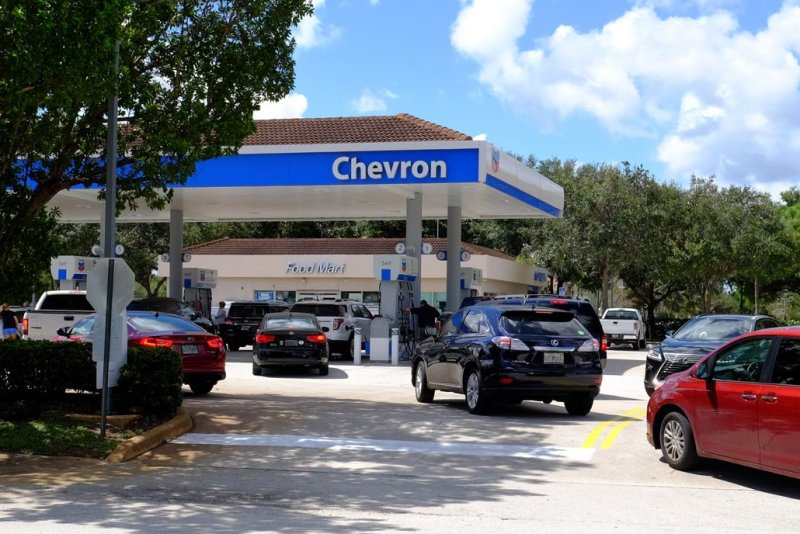Gas prices are holding steady, but it remains to be seen how sharp the spike will be from the outage of a major oil pipeline system off the British coast. File photo by Gary I Rothstein/UPI |
License Photo
Dec. 12 (UPI) -- Retail U.S. gasoline prices are holding steady, but it remains to be seen how much of a spike to expect from a British pipeline outage, an analyst said.
Motor club AAA reports a national average retail price for regular unleaded Tuesday at $2.46 per gallon, a slight decline from Monday, but more or less stable from last week. Until Monday, markets had given up some of the gains from November after the Organization of Petroleum Exporting Countries agreed to hold their production positions static through the end of next year.
That decision moderated the price of oil, until Monday when pipeline operator Ineos said it closed a pipeline system that carries about 40 percent of British North Sea oil production. Since Monday afternoon, the price for Brent crude oil, the global benchmark for the price of oil, is up more than 3 percent.
Dan McTeague, an analyst with GasBuddy who monitors pipeline developments in North America, said the closure will have clear implications on the price of oil, and inevitably the retail price for gasoline.
"How much remains to be seen," he told UPI.
Jeanette Casselano, a spokesperson for AAA, said that, before the North Sea disruption, a seasonal draw down in demand as winter sets in should send the price at the pump lower.
"AAA expects gasoline demand to weaken throughout the winter, which translates to better prices at the pump," she said in a statement.
By region, the West Coast of the United States is the most expensive in the country, with California topping the Lower 48 states with $3.13 per gallon. Supplies, according to AAA, are at their highest level since April, and weak demand should help drag prices lower in the region.
The Great Lakes states, meanwhile, are still the most volatile, with some states seeing a decline in price of 5 cents per gallon, while others, like in Indiana, posted an 11 cent per gallon jump from last week. In terms of supplies, the regional inventory is at its highest level since the middle of October, but still 2 million barrels below what it was this time last year.
The U.S. government said last month it expects $2.40 per gallon will be the average price for the year -- and add another five cents per gallon for 2018.
McTeaque stressed that, in Canada, the national average works out to be about $4.34 per gallon.















